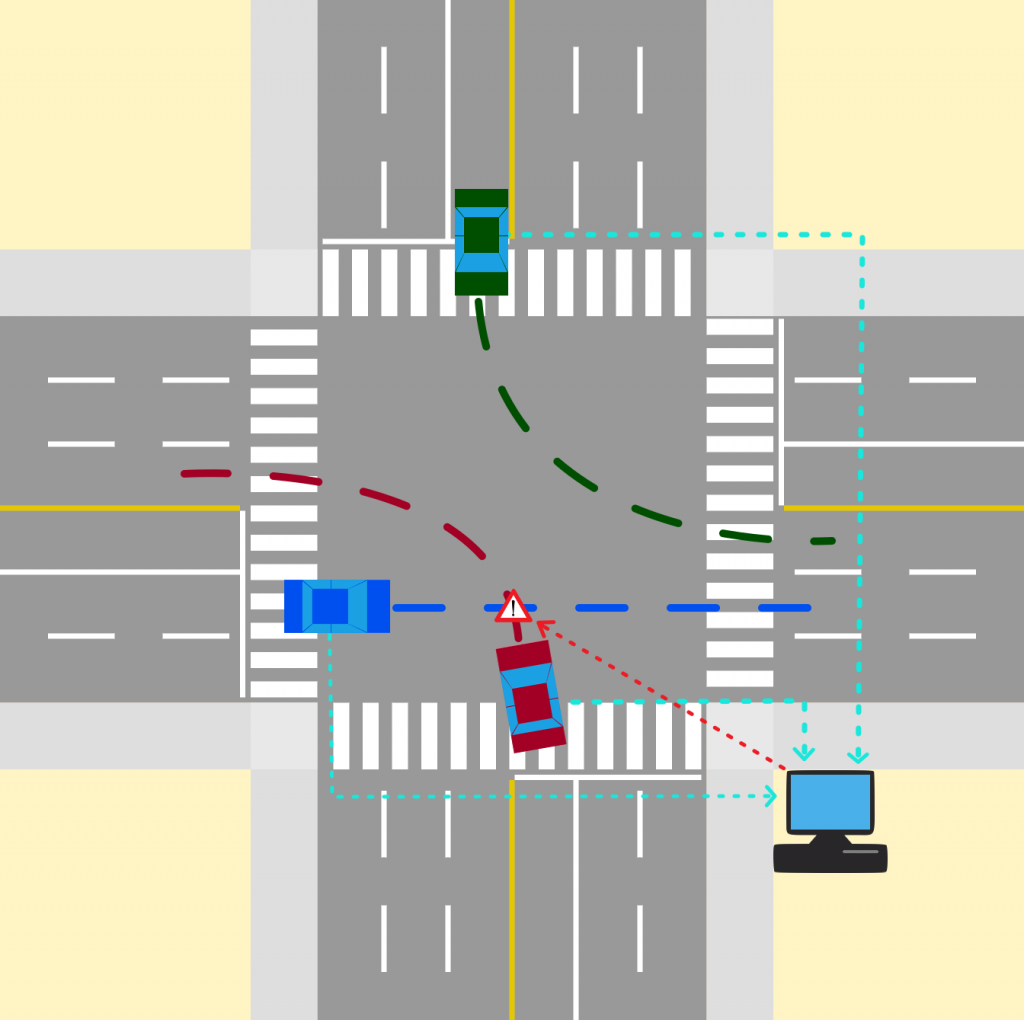
Abstract
The ability to accurately predict vehicle trajectories is essential in infrastructure-based safety systems which aim to identify critical events such as near crash situations and traffic violations. In a connected environment, important information about these critical events can be communicated to road users or the infrastructure to avoid or mitigate potential crashes. Intersections require special attention in this context because they are hotspots for accidents and involve numerous and complex interactions between road users. The proposed project will investigate approaches to and methodologies for vehicle trajectory prediction at intersections, and identify current challenges and opportunities. The project will also explore the applicability of inverse reinforcement learning (IRL) in developing trajectory prediction models. IRL is a machine learning framework for Learning from Demonstration (LfD) which allows for the learning of the series of actions that dictate driver behavior from expert demonstration. Trajectory prediction, while normally posed as a prediction problem, can readily be cast as a control problem given that the problem is essentially equivalent to finding how to drive a vehicle the way a human driver would. This is crucial in enabling us to use IRL to solve it. The IRL framework makes certain assumptions about the problem to be solved that, when these assumptions hold, improve the generalizability of models that are based on. We hope that by employing this framework we will be able to build models that better capture the behavior of human drivers at intersections.
Project Highlights
- The study demonstrated the suitability of B-Spline curves for representing vehicle trajectories in such a way as to enable prediction.
- The study developed a hybrid approach mixing elements from conventional supervised methods with elements from imitation learning yielding viable results for trajectory prediction.
Final Report
EWD & T2 Products
The project contributed to a new graduate course on intelligent transportation systems at SDSU (CIVE 696 Intelligent Transportation Systems).
A student thesis was resulted from the project. One Master’s student was involved in all project activities. The student developed a state-of-art understanding of methods to predict trajectory prediction models, utilized advanced machine learning methods to build trajectory prediction models, and improved a baseline model. It is expected that the student will defend his MS thesis in Summer 2021.
Student Impact Statement – Mohammad Sadegh Jazayeri (pdf): The student(s) working on this project provided an impact statement describing what the project allowed them to learn/do/practice and how it benefited their education.
Presentations/Publications
Jazayeri, M.S.; Jahangiri, A. Utilizing B-Spline Curves and Neural Networks for Vehicle Trajectory Prediction in an Inverse Reinforcement Learning Framework. J. Sens. Actuator Netw. 2022, 11, 14. https://doi.org/10.3390/jsan11010014
S. Jazayeri, A. Jahangiri (2020), “Trajectory Prediction at Intersections Using Inverse Reinforcement Learning”, 11th International Conference on Applied Human Factors and Ergonomics (AHFE 2020), held virtually due to COVID-19, July 16–20.
Jazayeri, M.S., Jahangiri, A., Ghanipoor Machiani, S. (2021), “Predicting Vehicle Trajectories at Intersections using Advanced Machine Learning Techniques”, Safe-D: Safety Through Disruption.
Final Dataset
The final datasets for this project are located in the Safe-D Collection on the VTTI Dataverse; DOI: 10.15787/VTT1/AKKZ6V.
Research Investigators (PI*)
Arash Jahangiri (SDSU)*
Sahar Ghanipoor Machiani (SDSU)
Mohammad Sadegh Jazayeri (SDSU)
Project Information
Start Date: 2020-05-15
End Date: 2021-05-05
Status: Completed
Grant Number: 69A3551747115
Total Funding: $150,000
Source Organization: Safe-D National UTC
Project Number: SDSU-01-01
Safe-D Theme Areas
Connected Vehicles
Automated Vehicles
Safe-D Application Areas
Infrastructure Technology
Planning for Safety
Risk Assessment
More Information
Sponsor Organization
Office of the Assistant Secretary for Research and Technology
University Transportation Centers Program
Department of Transportation
Washington, DC 20590 United States
Performing Organization
San Diego State University
5500 Campanile Dr
San Diego, CA 92182
USA
